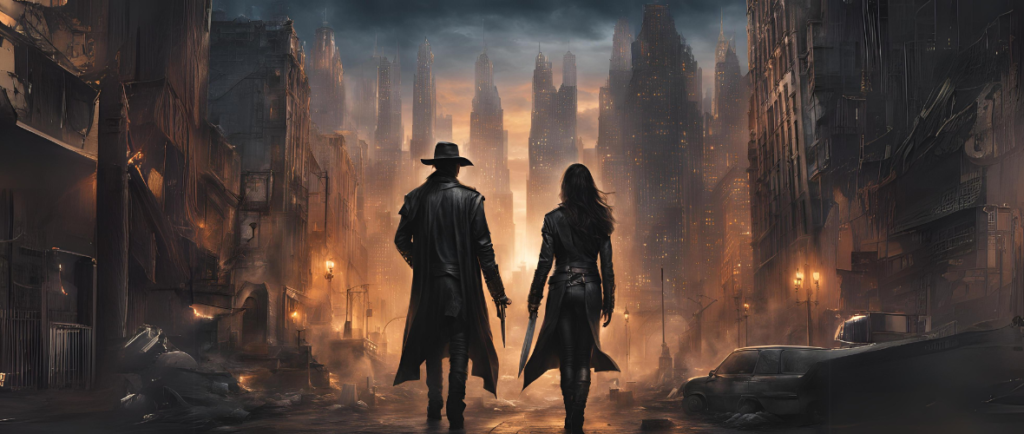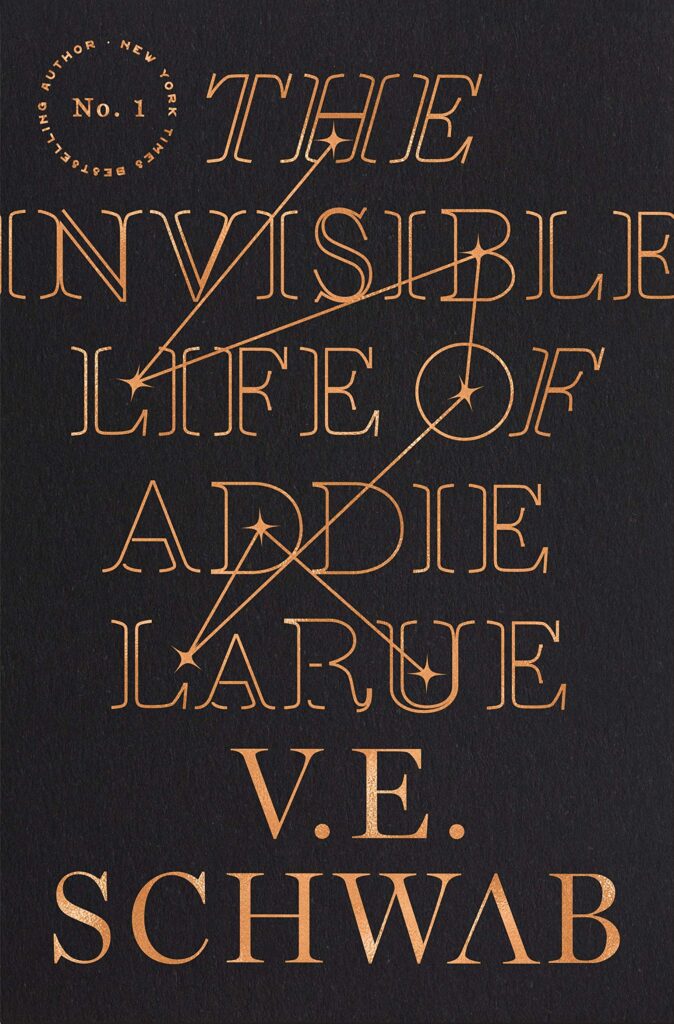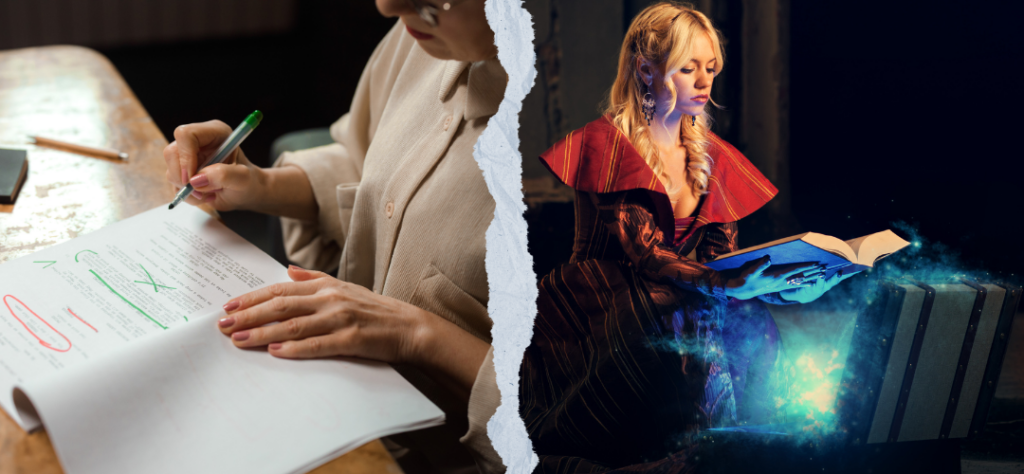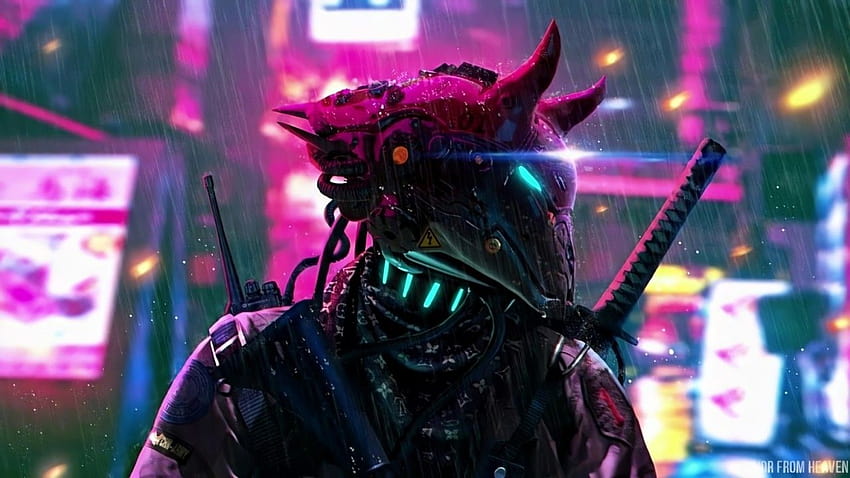
Urban Fantasy Sub-genre: why is it different?
Urban Fantasy is a distinctive sub-genre within the broader fantasy category that sets itself apart by blending elements of traditional fantasy or science fiction with urban settings, often set in contemporary or near-future cities. Popular examples of SFF Urban Fantasy include Jim Butcher’s The Dresden Files series, which follows a wizard detective solving supernatural crimes in Chicago, or Neil Gaiman’s Neverwhere, where a man discovers an alternate magical version of London beneath the city’s streets.
These stories take place in cities or urban environments familiar to readers, often incorporating elements of magic, mythical creatures, or futuristic technologies seamlessly into everyday life. Think of Diagon Alley set in the middle of London in the Harry Potter series(J.K. Rowling). Camp Half-Blood is set in the novels of Percy Jackson & the Olympians by Rick Riordan. Or maybe you enjoyed Brakebills College for Magical Pedagogy, in The Magicians by Lev Grossman. The novels explore the contrast between the magical and the gritty, incorporating cityscapes, nightlife, and modern societal issues. There are magical creatures, supernatural powers, and mythical beings that coexist with everyday life, blending the extraordinary with the mundane. Also, the magic is not usually overt or grandiose but is often hidden or operates in the shadows. Magical elements coexist with the mundane, and the existence of the supernatural is concealed from the general public. Examples would be City of Bones by Cassandra Clare (The Mortal Instruments series) where protagonist Clary Fray discovers the hidden world of Shadowhunters in New York City. Or A Discovery of Witches by Deborah Harkness where historian and witch Diana Bishop accidentally discovers a bewitched manuscript in Oxford’s Bodleian Library, triggering her re-entry into the world of magic. She forms an alliance and romantic relationship with vampire Matthew Clairmont, navigating a world where witches, vampires, and demons coexist with humans.
These themes typically involve supernatural creatures such as vampires, werewolves, witches, or fae, who coexist with or hide from ordinary humans. However, the urban environment is not just a backdrop but an integral part of the narrative. There is a seamless integration of fantastical elements into the real world. Blending fae mythology with urban settings you can read plots of enchanted or magical forests and urban settings intertwined with faery elements. Check out The Darkest Part of the Forest by Holly Black or The Wood Queen by Karen Mahoney (The Iron Witch series). And a few newer novels you might check out would be The City We Became by N.K. Jemisin or The Invisible Life of Addie LaRue by V.E. Schwab 🡸is such a great read.
Urban Fantasy often incorporates elements from other genres such as mystery, thriller, romance, and sometimes even horror. This blending of genres allows for a diverse range of storytelling possibilities. Examples include The Devil You Know by Mike Carey which blends Urban Fantasy with Crime Noir. Middlegame by Seanan McGuire blends Urban Fantasy and Science Fiction. My favorite mixology is those that blend Urban Fantasy and Post Apocalyptic Fiction, such as Trail of Lightning by Rebecca Roanhorse. Many more blending of post-apocalyptic would be books such as The Girl With All the Gifts by M.R. Carey or you could watch Resident Evil series or The Maze Runner series. Woah, so good.
This difficult technique of Urban Fantasy uses vivid world-building, relatable characters, and a seamless blend of the fantastical with the mundane. They create settings of cityscapes, landmarks, and hidden magical places with vivid details. They develop unique and consistent magic systems to help readers understand how the fantastic elements function within the urban environment. The backstory or history of the magical world and its integration with the urban setting adds depth and realism. Moon Called by Patricia Briggs is the first book in the Mercy Thompson series, following Mercedes “Mercy” Thompson, a mechanic and shapeshifter, as she navigates a world where werewolves, vampires, and other supernatural beings coexist with humans. Ninth House by Leigh Bardugo follows the character Alex Stern, a young woman with a troubled past, who is given a second chance to attend Yale University on the condition that she monitors the university’s secret societies, which practice dark magic.
Through magic in the shadows, and character complexity, many authors ride the urban fantasy series that become quintessential fan favorites. Mercedes Lackey’s urban fantasy novels often transport readers into contemporary or alternate Earth settings where magic and supernatural beings are integrated into everyday life. Her stories typically feature protagonists who discover their own magical abilities or encounter mythical creatures hidden within society’s fabric. Lackey’s writing combines rich world-building with intricate magical systems, often drawing on diverse mythologies and folklore to create immersive and captivating narratives. Themes of adventure, personal growth, and the struggle between good and evil are common in her works, which appeal to readers seeking fantastical escapism grounded in familiar urban landscapes.
In summary, Urban Fantasy distinguishes itself by grounding fantastical elements in the real world, exploring the interplay between magic and modernity, and offering a unique blend of genres with relatable protagonists facing extraordinary challenges.
Please read and review my serial publishing novel, Sparrow’s Legacy, on Kindle Vella. You can read the first three chapters free on Amazon by searching for “Sparrows Legacy Kindle Vella” or clicking here. My debut SFF novel, the space opera Drayton’s Discoveries is available on Amazon. For the love of all fantasy and SFF, if you read something please leave a review. Feedback is my sole sustenance for writing. Don’t let me starve.
For those trying the writing game, I want to give a quick shout-out to PLOTTR software. I’ve found it has really improved my writing game and increased my efficiency tremendously. It is my new favorite writing aid. Use any of my affiliate links below and I might get a small commission. Thanks.
Check out my YouTube channel for PLOTTR videos @jlnichauthorsff
Joseph Michael’s Learn Scrivener Fast e-course
Please subscribe to my website if you want to be notified when I’ll be publishing or to get free samples of my work.
JL Nich, Science Fiction Fantasy Author





